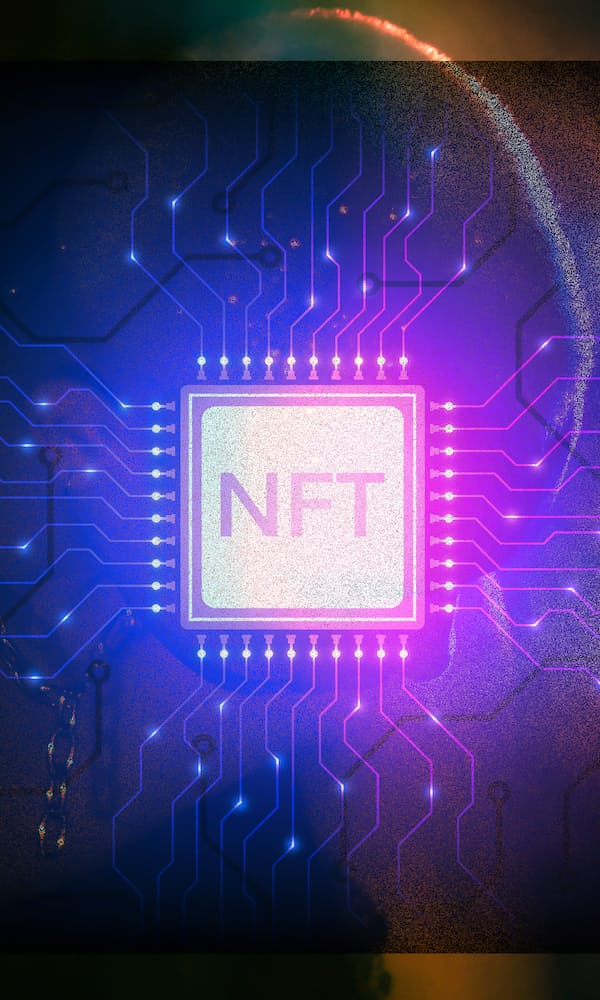Table of Contents
- Table of Contents
- 1. Utility NFT Introduction: The Evolution of NFTs
- 2. Utility NFTs Defined: Beyond Digital Art
- 3. Financial NFTs (FNFT): A Deep Dive
- 4. Comparing Utility NFTs and FNFTs: Similarities and Differences
- 5. CryptoVaults: A Revolutionary Hybrid
- 6. The Role of Vx Tokens in Creating CryptoVaults
- 7. Lido’s Influence: Integrating wstETH and stMATIC
- 8. Stader’s MaticX: Strengthening the Utility
- 9. DeFi and the Utility NFT Ecosystem
- 10. Conclusion: The Bright Horizon of Utility NFTs

1. Utility NFT Introduction: The Evolution of NFTs
The world of decentralized finance (DeFi) has been buzzing with terms like “Utility NFT” that promise to redefine the way we perceive and interact with digital assets. Among the best defi coins and best defi crypto lies an emergent class of assets known as NFTs. Yet, not all NFTs are created equal. As we venture deeper into this landscape, we uncover Utility NFTs and FNFTs, each with its distinct characteristics and value propositions.
2. Utility NFTs Defined: Beyond Digital Art
While many associate NFTs with digital art and collectibles, Utility NFTs take a step beyond. They are tokens that represent a specific function or access within a given ecosystem. Think of them as “digital tickets” or “access keys”, whether it’s for a particular service, a digital item, or exclusive content on the best defi platforms.
3. Financial NFTs (FNFT): A Deep Dive
FNFTs represent financial instruments or products. In the evolving DeFi landscape, FNFTs stand out, providing users with ways to interact with top defi protocols, stake assets, and earn rewards. They merge traditional finance concepts with blockchain’s trustless nature, offering innovative defi strategies.
Financial NFTs, or FNFTs for short, are a remarkable leap in the evolution of decentralized finance. At their core, FNFTs embody the amalgamation of traditional financial instruments or products with the dynamic capabilities of NFTs. Let’s delve deeper.
3.1. The Genesis of FNFTs
Traditionally, financial instruments, whether they be bonds, equities, or derivatives, existed in somewhat rigid formats. They were primarily governed by centralized bodies, and transferring or altering these assets involved multiple intermediaries. Enter FNFTs. Leveraging the versatility of blockchain technology, FNFTs digitize these instruments, giving them a unique identity on the blockchain, thus facilitating direct peer-to-peer interactions and trades without intermediaries.
Example: Imagine having a bond represented as an FNFT. Instead of going through the usual processes of bond redemption or sale through financial institutions, the bond’s FNFT could be directly traded or used as collateral in the DeFi space.
3.2. Interacting with Top DeFi Protocols
FNFTs are not mere passive assets; they are gateways to the vast DeFi universe. Holders of certain FNFTs might gain premium access to top defi protocols, enabling them to execute trades, take part in liquidity pools, or even propose and vote on governance decisions.
Example: A decentralized exchange might issue an FNFT that grants its holder reduced fees on trades or priority status in liquidity pools, essentially functioning as a VIP pass.
3.3. Staking and Earning Rewards
One of the standout features of FNFTs is their staking capability. Unlike traditional assets which remain dormant in your portfolio, FNFTs can be actively staked within the blockchain ecosystem, earning rewards for their holders.
Example: CryptoVaults, powered by VaultX tokens, allow users to stake their FNFTs and earn returns based on specified parameters, such as the duration of the stake and the underlying assets. This model encourages both long-term holding and active participation in the ecosystem.
3.4. Bridging the Old and the New
Perhaps the most revolutionary aspect of FNFTs is how they seamlessly blend age-old finance concepts with blockchain’s trustless mechanisms. This hybrid nature allows for the creation of innovative defi strategies, pushing the boundaries of what’s possible in finance.
Example: Tokenized real estate or commodities, represented as FNFTs, could be used in DeFi platforms for lending, borrowing, or as collateral, creating a myriad of opportunities and strategies previously unimagined.
4. Comparing Utility NFTs and FNFTs: Similarities and Differences
Both Utility NFTs and FNFTs are tokens that carry specific value beyond mere ownership. While Utility NFTs can grant access or functionality, FNFTs represent financial interactions and agreements. Yet, the line blurs when assets, like VaultX’s CryptoVaults, merge these two worlds, as we’ll explore next.
The sprawling world of NFTs is characterized by its diverse functionalities, with Utility NFTs and FNFTs standing out as two major pillars. Although distinct in their core offerings, the convergence of these two types offers users a rich and expansive experience in the digital realm. Let’s dive deeper into their distinctions and areas of overlap.
4.1. Utility NFTs: More Than Just Ownership
 Utility NFTs, as the name suggests, provide users with specific functionalities or access beyond just signifying ownership. These functionalities can range from access to exclusive content, special privileges within a virtual space, or even real-world perks.
Utility NFTs, as the name suggests, provide users with specific functionalities or access beyond just signifying ownership. These functionalities can range from access to exclusive content, special privileges within a virtual space, or even real-world perks.
Example: A musician might release a limited edition Utility NFT that not only represents a digital collectible of their latest album but also grants holders a backstage pass to their concerts or exclusive behind-the-scenes content.
4.2. FNFTs: Financial Instruments on Blockchain
FNFTs, on the other hand, digitize financial interactions and agreements, weaving them into the blockchain fabric. From representing equities, bonds, or other assets to facilitating complex financial strategies in DeFi, FNFTs are the future of finance, reinvented.
Example: Consider a real estate property tokenized into FNFTs. Holders of these FNFTs might receive rental income or could leverage these tokens for loans in the DeFi space.
4.3. The Overlap: Where Two Worlds Converge
While Utility NFTs and FNFTs each have their unique offerings, the exciting developments emerge when these categories overlap. Assets like VaultX’s CryptoVaults epitomize this convergence, offering both functionalities of a Utility NFT and the financial benefits of an FNFT.
Example: With CryptoVaults, holders get exclusive access to the Lido dashboard suite, a feature characteristic of Utility NFTs. Simultaneously, they can stake and earn returns, harnessing the financial potential similar to FNFTs.
4.4. Implications for the Future
The amalgamation of Utility NFTs and FNFTs points towards a more integrated, fluid, and user-centric future in the crypto space. As boundaries blur and functionalities merge, users stand to benefit from a wider array of use-cases, ensuring that their assets work harder and smarter.
Example: A video game might release a character skin as a Utility NFT which, when owned, also acts as an FNFT by allowing the holder to earn dividends from in-game purchases or trades.
5. CryptoVaults: A Revolutionary Hybrid
CryptoVaults, emerging from the visionaries at VaultX, embody both utility and financial value. They can be traded, staked, or integrated into various defi passive income strategies. Being a part of the best defi project, CryptoVaults seamlessly combines the best of both Utility NFTs and FNFTs, encapsulating them in a single “crypto vault.”
6. The Role of Vx Tokens in Creating CryptoVaults
At the heart of CryptoVaults lies the Vx Token, the native asset of VaultX. By leveraging Vx Tokens, users can mint their unique CryptoVaults, which can then be used in diverse ways – be it staking on a matic staking ledger or trading on top defi platforms.
7. Lido’s Influence: Integrating wstETH and stMATIC
Lido, one of the top defi protocols, plays a pivotal role in enhancing the utility of CryptoVaults. Through its staked Ethereum (wstETH) and staked MATIC (stMATIC), CryptoVault holders can access innovative staking strategies, further solidifying VaultX as the best place to stake Polygon.
8. Stader’s MaticX: Strengthening the Utility
Stader’s MaticX complements the functionalities offered by Lido. With its unique solutions for MATIC staking, it further boosts the allure of CryptoVaults. Such collaborations with innovative DeFi startups exemplify the potential of Utility NFTs in the DeFi space.
9. DeFi and the Utility NFT Ecosystem
Utility NFTs, particularly hybrids like CryptoVaults, find their true potential when integrated with broader DeFi ecosystems. Whether it’s seeking the best defi app for trading, devising defi strategies for maximized returns, or diving into the best defi tokens for long-term growth, the synergy between Utility NFTs and DeFi cannot be understated.
10. Conclusion: The Bright Horizon of Utility NFTs
The march towards an interoperable and cohesive DeFi world is in full swing. Utility NFTs and FNFTs, especially innovative assets like CryptoVaults, pave the way. As the DeFi universe continues to expand, with new defi startups and platforms emerging, the importance and value of these unique tokens are set to grow exponentially.

